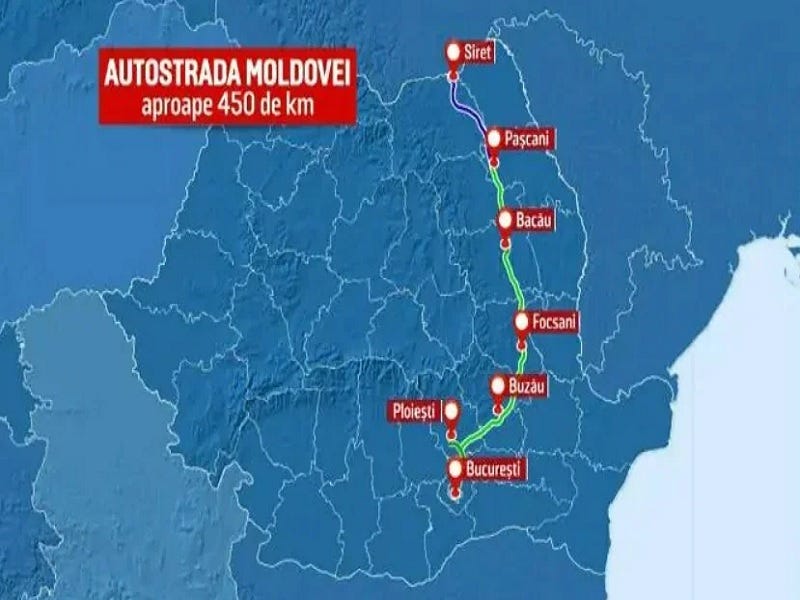This project is a much bigger deal than most observers have realized since it’ll play an important role in shaping the EU and NATO’s post-conflict future upon the inevitable end of their proxy war on Russia.
Romanian media recently reported that their country is building the so-called “Moldova Highway” (MH) between the capital of Bucharest and the town of Siret on the Ukrainian border in “emergency” mode. 3,000 workers and hundreds of vehicles are said to be involved in round-the-clock construction on this project. Upon its completion, the MH will have major military-strategic implications, which will be briefly discussed in this piece.
The larger context within which this project is being constructed in “emergency” mode concerns the several-month-long blockade of Poland’s border with Ukraine by protesting farmers and truckers whose livelihoods have been adversely affected by the EU’s favorable policies towards Kiev. This unexpected development abruptly impeded NATO’s military logistics to that former Soviet Republic, thus compelling the bloc to build a more reliable route as soon as possible, ergo the MH.
In terms of continental connectivity, this newly created corridor aligns with the spirit of the “Via Carpathia” (VC) proposal to pioneer a highway system from Lithuania’s Baltic port of Klaipeda to the Greek Mediterranean one of Thessaloniki. If it’s linked to the “Baltic Ring” that Poland and Sweden plan to build together with Finland, Germany, Denmark, and the Baltic States, then the VC can stretch all the way from the Arctic to the Mediterranean.
The VC’s initial plan was to connect Romania and Poland via Hungary and Slovakia, which are their fellow “Three Seas Initiative” (3SI) partners and Warsaw’s very close ones through the Visegrad Group that those three and Czechia participate in. Hungarian Prime Minister Orban’s refusal to allow NATO military aid to Ukraine to transit through his country and last fall’s return of like-minded Slovak Prime Minister Fico, however, arguably led to the decision to informally reroute the VC through Ukraine instead.
These interconnected infrastructure projects, which contribute to North-South/Arctic-Mediterranean connectivity, are important to keep in mind when assessing the MH’s military-strategic importance. It essentially amounts to including Ukraine in these plans at the exclusion of Hungary and Slovakia, which can also facilitate the transit of NATO personnel and equipment across the continent in the event that last November’s proposed “military Schengen” comes to fruition.
This refers to the plan put forth by German NATO logistics chief Sollfrank to optimize the bloc’s bureaucratic and logistical workings for the purpose of creating a practically borderless military space on the continent. The southern dimension from Greece to Romania via Bulgaria is already unofficially in place due to the existing shipment of NATO wares across this route, aided in no small part by the ratification of the Greek-American Mutual Defense Cooperation Agreement in May 2022.
This pact enabled the US to set up a naval base in the northeastern port city of Alexandroupolis, which nowadays functions as one of the top entry points for Ukrainian-destined US arms and equipment. The MH’s military significance is therefore that it’ll further speed up the time that it takes for Kiev to receive these supplies while diversifying from prior dependence on newly unreliable Polish routes. It additionally serves as proof of the “military Schengen” concept in action and can thus help push through this agenda.
Viewed from this perspective, the MH is actually a crucial cog not only in NATO’s proxy war plans against Russia, but also in terms of American geo-economic and military strategy towards Europe with respect to rerouting the VC through Ukraine and promoting the need for a “military Schengen” as soon as possible. This makes it a much bigger deal than most observers have realized since it’ll play an important role in shaping the EU and NATO’s post-conflict future upon the inevitable end of their proxy war on Russia.




